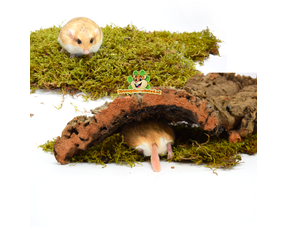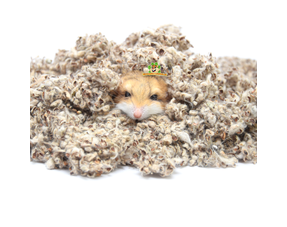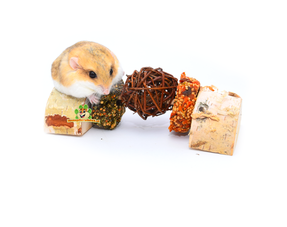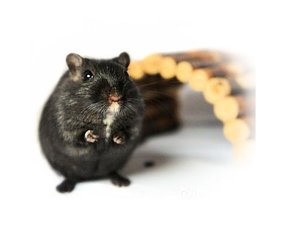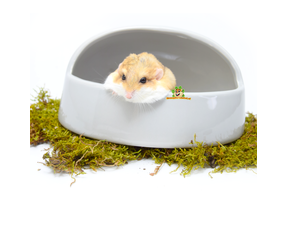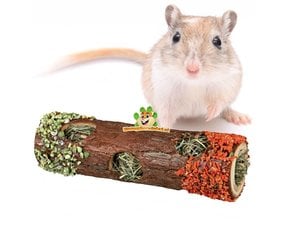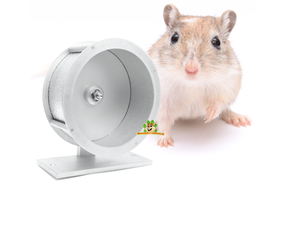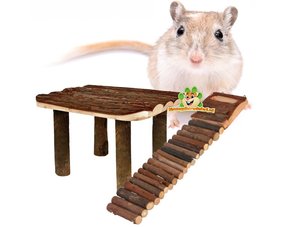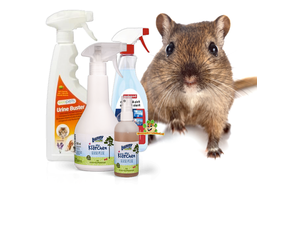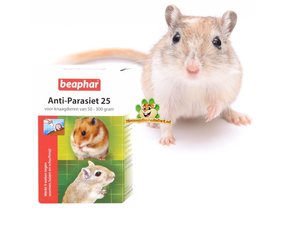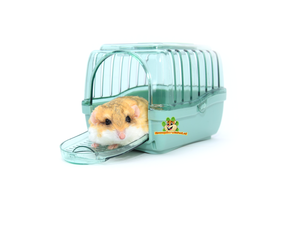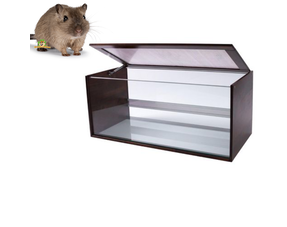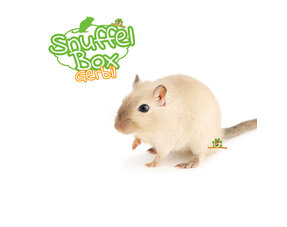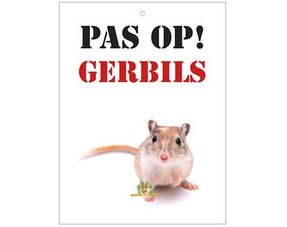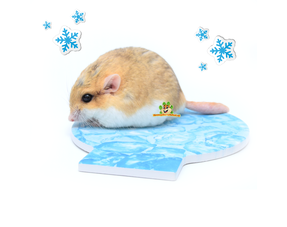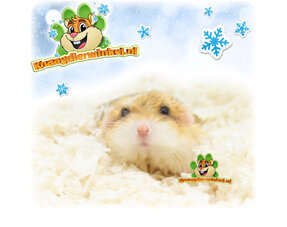Everything for your Gerbil in the Gerbil Webshop!
Buy everything for your Gerbil easily and quickly at DRD Knaagdierwinkel® - The Gerbil Webshop that makes your rodent heart beat faster!
Are you looking for Gerbil items and supplies? Look no further, because you've come to the right place in the Gerbil Webshop ! We have a huge range of Gerbil goodies ready for you. From delicious Gerbil food that will make even the pickiest Gerbil's mouth water, to Gerbil sand & sandboxes where your Gerbils can enjoy themselves like true beachgoers. And of course we also have cozy Gerbil houses , gnawing-proof material , Gerbil-proof exercise wheels for endless sports fun, and much more. Ordering is as easy and fast as an excited Gerbil running on his wheel!
What different Gerbil types are there?
Did you know that there is a colorful group of Gerbil species?
-
Mongolian Gerbil: The superstar among Gerbils! This charismatic little rodent friend is by far the most popular Gerbil species as a pet. With his social nature and cozy lifestyle in a close-knit family, the Mongolian Gerbil is winning the hearts of Gerbil fans all over the world. With a body length of 10 to 12 cm and a weight of 70 to 130 g, it brings joy and fun to your home for about 3 to 4 years.
-
Fat-tailed Gerbil: The Gerbil with a lush tail to be jealous of! This Gerbil species has a unique build and, you guessed it, a remarkably thick tail. Its tail acts as a storage place for fat and moisture, giving it a slightly "fat-tailed" appearance. The Fat-tailed Gerbil also has a different diet than its Mongolian cousins - it likes to feast on insects. So in addition to his main food, feel free to give him a tasty (dried) insect mix. This Gerbil is a territorial king and feels best when he is the sole ruler in his kingdom.
-
Persian Gerbil: The aristocrat among the Gerbils! This Gerbil species is larger than its Mongolian relatives and can reach a respectable age of 6 to 8 years. With its long, hairy tail ending in a dark tassel, the Persian Gerbil radiates pure elegance. They are group animals and always need the company of at least one member of their own kind. A lonely nobleman in his palace is of course not an option!
-
Pale Gerbil - Egyptian Gerbil: The mysterious charmer! This Gerbil species is also known as the "Pale Gerbil" and has an intriguing appearance. With a soft, gray coat and friendly personality, he is a favorite among Gerbil lovers. Although he is slightly smaller than the Mongolian Gerbil, he makes up for that with his charm and charisma.
How should you handle a Gerbil?
Let's talk about the delicate art of handling Gerbils. It's like dealing with royalty, but with a fluffy twist! If your Gerbils are napping during the day, it is wise to leave them alone as much as possible. After all, they need their beauty sleep, just like all the divas of the rodent world.
But suppose your Gerbil is awake and you want to pick him up, what do you do? Well, we have a little trick for you here! The secret lies in the subtle game of lifting. You don't want your Gerbil to think that a giant bird of prey is coming at him from the sky. So avoid the top-down approach unless you want your little friend to think he's starring in a thrilling action movie.
Instead, pick Gerbil up like a true master by gently scooping him up from underneath. It's like serving a perfectly prepared plate of rodent food. Carefully and with love. This makes your Gerbil feel safe and appreciated, and who doesn't like feeling appreciated?
Now, let's face it, Gerbils aren't exactly fans of cuddle sessions. They are more of the "stay away from me" type, and we have to respect that. So, while you can't actually pet them like a fluffy puppy, you don't have to worry about them viewing your fingers as a tasty snack. They are more of the peaceful kind and will not bite easily.
So remember, when you lift your Gerbil, do it with the grace of a ballerina and the precision of an operating surgeon. They will thank you with their cute Gerbil looks and maybe even a soft squeak of appreciation. Enjoy your time with these little furry creatures and be the best Gerbil handler the rodent world has ever seen!
The Gerbil enclosure is spacious and suitable for digging
The Gerbil is a real rodent and a ground animal ! It is therefore important that the cage is 100% gnawing-proof and not too high. In addition, they are social group animals and need a lot of space to dig, jump and play. The Gerbil cage must therefore be suitable for at least two Gerbils and have a size of at least 100 x 50 cm . TheGerbil enclosure does not have to be high, but should above all have a spacious surface. At DRD Gerbil Webshop we have taken this into account, so that you can choose a suitable Gerbil cage without any worries!
All Gerbil information at a glance
Okay, let's lay out all the Gerbil information neatly, like we're the kings and queens of the Gerbil world!
In the magical table below we have collected all the important details about Gerbils so that you can find everything you need at a glance. We've even put the four most popular Gerbil varieties side by side, as if they were having their own Gerbil Conference!
Here comes the great table with all the important Gerbil information:
Mongolian Gerbil
|
Fat-tailed gerbil
|
Persian
|
Egyptian
|
|
| Stay LxW together min. |
5000cm2 100 x 50 cm |
4000cm2 100 x 40 cm |
5000cm2 100 x 50 cm |
5000cm2 100 x 50 cm |
| Ground cover Kind |
Digable | Digable | Digable | Digable |
| Soil layer Height min. |
25/40 cm | 25/40 cm | 25/40 cm | 25/40 cm |
| Power supply |
Complete Gerbil food | The fat-tailed gerbil is also an insect eater by nature, so in addition to complete gerbil food it is therefore necessary to feed (dried) insects. |
Complete Gerbil food | Complete Gerbil food |
| Nesting material |
Yes | Yes | Yes | Yes |
| Changing Stay after approx |
8 - 12 weeks Depending on the group size |
8 - 12 weeks | 8 - 12 weeks Depending on the group size |
8 - 12 weeks Depending on the group size |
| Running wheel Diameter min. |
30 cm | 25/30 cm | 30 cm | 30 cm |
| House or hiding place |
Multiple, depending on group size. At least 1 larger house |
Multiple At least 1 larger house |
Multiple, depending on group size. At least 1 larger house |
Multiple, depending on group size. At least 1 larger house |
| Toys Type and purpose |
Clogging, gnawing, discovering, digging, tunnels |
Clogging, gnawing, discovering, digging, tunnels |
Clogging, gnawing, discovering, digging, tunnels |
Clogging, gnawing, discovering, digging, tunnels |
| Sandbox |
Yes | Yes | Yes | Yes |
| Drinks Administer via |
Bottle made of gnaw-resistant material or protected by a bottle holder |
Bottle made of gnaw-resistant material or protected by a bottle holder | Bottle made of gnaw-resistant material or protected by a bottle holder | Bottle made of gnaw-resistant material or protected by a bottle holder |
| Prevention Parasite, worm |
No need for preventive treatment, only for symptoms. |
No need for preventive treatment, only for symptoms. |
No need for preventive treatment, only for symptoms. |
No need for preventive treatment, only for symptoms. |
| Way of life Together or alone |
Social Mongolian Gerbils should be kept in pairs at least. Always ask the breeder or shelter for advice. |
Solitary/Alone Fat-tailed gerbils should be kept alone. |
Social Mongolian Gerbils should be kept in pairs at least. Always ask the breeder or shelter for advice. |
Social Mongolian Gerbils should be kept in pairs at least. Always ask the breeder or shelter for advice. |
| Eyes open |
16-20 days | 10-14 days | 16-20 days | 10-14 days |
| Particularities | Mongolian Gerbils can develop epilepsy at a young age. Tyzzers disease can occur in Gerbils. |
The fat-tailed gerbil has a thick tail in which it stores moisture and fat. The thicker the tail, the more it stores. The fat-tailed gerbil is calmer than the Mongolian Gerbil |
Well, that was an impressive table full of Gerbil knowledge! We hope this helps you find the Gerbil strain that best suits you and your needs. Remember that every Gerbil has individual needs, so make sure you put their care and well-being first. Have fun with your cute Gerbil friends!
So dive into the world of Gerbils and spoil your furry friends with the best Gerbil items you can find at DRD Knaagdierwinkel®!



